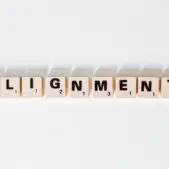We live our lives consumed by screens
We spend an average of 10 hours and 39 minutes per day looking at a screen. And as I type this, I realize that I might be above average, between 8 hours of working on a computer per day, my cell phone, filming videos, and watching tv/movies when I get home. I am continually consuming digital content.
There are a lot of conversations about the impact that screen time is having on our culture, eyes, physical health, but when are we going to start addressing the direct impact it has on our mental health?
One of my favorite shows on Netflix, Black Mirror, is mostly made up of storylines about what could go wrong with all the technology humans keep inventing. So when you have an episode that freakishly relates to real life, it’s time to reevaluate where the direction of digital products is heading.
Who is doing something about it?
1. Bumble
Bumble started a conversation this week. Their founder, Whitney Wolfe, has made a name for herself for all the right reasons. As a former marketing exec at Tinder, she was fed up with the culture and direction the company was heading. Thus Bumble was born. It has grown into dating, friendship, networking and they’re not slowing down anytime soon. From the start, Whitney put empowering women at the center of the company.
Every move Bumble makes is to make the lives of their users better and safer. So it came as no surprise that their most recent user experience move is all about self-care.
An away status on a dating app? That’s unheard of. After all, the more swipes, matches and success stories there are, the more downloads and revenue there will be. Bumble realized they had a responsibility to address digital and dating burn out. I can say from personal experience; a girl can only take so many opening lines of “What’s up?” or certain individuals that can’t handle rejection.
Bumble was the first dating app to put the power of the first move in women’s hands; now they’re the first to allow users to set an away status.
2. L.A.U.G.H. App
The National Institute of Health’s Medline Plus reports that the average kid spends 3 hours per day watching television and 5-7 hours total on screens. Another study, like this one from the American Academy of Pediatrics, states that 7 hours per day is the average that kids spend on entertainment media including televisions, computers, phones and other electronic devices. All this screen time can leave kids feeling anxious and disconnected.
Parents can try to limit screen time usage, but the reality is, digital devices are increasingly becoming a part of daily life. To combat this trend, Catherine Mayer, a Seattle based artist has broken into the world where art meets technology. She has created an app that uses a multisensory experience to help kids start the day calm and focused. Called the L.A.U.G.H. App, nicknamed “The Un-App App®.” This iPad® app combines the visual arts, music, movement and breathing exercises to create calming and positive energies for kids.
The app is currently the center of a pilot program at Madrona Elementary school, and they have seen great results. The goal is to help children build habits of mindfulness and decrease stress.
3. Calm App
One of 2017’s apps of the year was built just in time and is a great sign of what’s to come from the startup world and the emphasis we’re starting to put on mental health.
The Calm App is an award-winning meditation app that is helping people in this new age of digital addiction handle the impacts of everything life is throwing at us. With a clean and straightforward user experience, it’s easy enough for beginners like myself, who thought meditation only looked like me sitting on the floor, legs crossed and eyes closed. With so many apps that focus on our physical well-being, the Calm App is a step in the right direction.
I was able to focus in on things that were most relevant to me, like winding down after a busy day with sleep stories. It has tools and podcasts that help with breathing techniques, mindfulness, and building coping skills. You can also complete plans designed for multiple days, like 7 Days of Calm. They hope to develop the daily habits of mindfulness and help people feel calmer.
4. iOS 12 Update
Apple rolled out its most recent iOS update this September with my favorite feature to-date. Screen time, a new feature that tracks how many times you pick up your phone per day, how many notifications you’re getting (and which app is sending them), as well as how much time you’re spending on each app.
At first, this might seem like information you don’t want to know. Like the fact that I spent 4 hours on Instagram one day, to be fair I do work in marketing. (That’s my excuse anyway.)
What I noticed a few days after updating my phone was that I was more aware of my screen time and proactively figuring out ways to decrease it. With features like setting time limits for apps, I’ve been able to set limits for social media and to get the notification that “time is up” actually brings a sense of relief. This feature is very contradicting to the world we live in, where companies want to grab our attention more and more, Apple is putting that choice in our hands.


